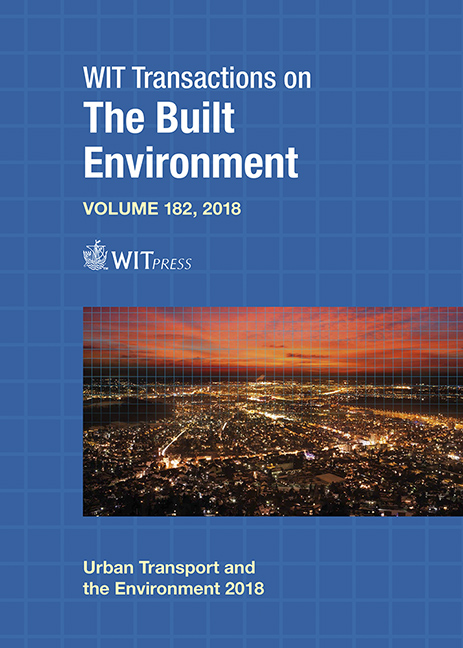ENERGY EFFICIENCY SOLUTIONS FOR SUSTAINABLE URBAN MOBILITY: CASE STUDY OF THE MILAN METROPOLITAN AREA
Price
Free (open access)
Transaction
Volume
182
Pages
13
Page Range
151 - 163
Published
2019
Paper DOI
10.2495/UT180151
Copyright
WIT Press
Author(s)
CORINE NSANGWE BUSINGE, SILVANO VIANI, NICOLA PEPE, MARCO BORGARELLO, CARLO CARUSO, GIUSEPPE TRIPODI, STEFANIA SORESINETTI
Abstract
In the near future cities will have to supply innovative and high value-added mobility services with respect for environmental, traffic and energy sustainability. It is a great challenge since transportation represents over 20% of the global energy consumption, 40% of which is in urban areas. In this context RSE has developed the project STORM (Strategies TOwaRds a sustainable Mobility) which aims to study smart and sustainable solutions and policies in urban mobility planning in order to supply passengers and goods mobility, with respect to economic, energy-efficiency and environmental targets. This paper investigates the impact and benefits of different mobility solutions and policies by applying a multimodal transport model. The Milan area is used as test case for two main reasons: first, its high population density and strong transport offer and second, the large amount of information and data available on passengers’ mobility within this area. By assuming that the mobility demand is a constant, 8 mobility scenarios have been tested on the Milan area, which can be classified into two main groups: 4 measures to strengthen the public transport offer; 4 measures to restrict and discourage the use of private vehicles or introduce a relevant share of electric vehicles. Finally, three combinations of these scenarios were made in order to evaluate the impact of a deep and broad transformation of the current mobility trends. For each scenario a cost/benefit analysis was made in terms of energy efficiency, traffic reduction and environmental impact in order to draw up a ranking of the most advantageous and promising measures for urban mobility.
Keywords
urban passengers’ mobility, transport efficiency, modal split, scenario analysis





